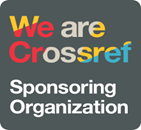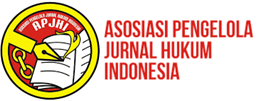The Socio-economic Factors Impacting Juvenile Delinquency: An Exploratory Study
DOI:
https://doi.org/10.70193/ijlsh.v2i3.273Abstract
This study investigates the socio-economic determinants of juvenile delinquency in Bangladesh, focusing on juveniles documented in police reports in Dhaka. The purpose of the research is to examine how family instability, parental neglect, peer influence, neighborhood insecurity, and financial deprivation contribute to delinquent behavior. A mixed-methods design was adopted, combining structured surveys of 100 juveniles housed in Juvenile Development Centers with in-depth interviews of law enforcement officers, psychologists, and social workers, alongside case study analysis of police records. Results show that 81% of offenders belonged to the 16–18 age group, with 70% being male and 30% female. Educational deprivation was widespread, with 82% having no or only primary-level education. Household income data revealed that 83% came from low to lower-middle- income families, while 76% of parents lacked formal education. Peer influence emerged as a decisive factor, with 83% of juveniles admitting involvement in delinquent activities under the influence of friends. Regression and correlation analyses confirmed significant associations between family structure, income, peer networks, and drug use, while case studies revealed organized recruitment of youth by criminal gangs and political exploitation. The findings underline that juvenile delinquency is not only a matter of individual deviance but also a structural problem linked to socio-economic deprivation and institutional weakness. The practical value of this research lies in its recommendations to strengthen family welfare programs, expand vocational training, improve enforcement of the Children Act 2013, and develop integrated rehabilitation systems aimed at reducing recidivism and promoting safer communities.
Downloads
References
Abdullah, R. & Nahid Ferdousi. (2024). CHILD PROTECTION AND JUVENILE JUSTICE: LEGAL ISSUES IN BANGLADESH AND MALAYSIA. UUM Journal of Legal Studies, 15(2), 529–557. https://doi.org/10.32890/uumjls2024.15.2.6
Abhishek, R., & Balamurugan, J. (2023). Factors and Patterns Associated with Juvenile Delinquency with reference to Juvenile Crimes in India. Journal of Law and Sustainable Development, 11(11), e1210. https://doi.org/10.55908/sdgs.v11i11.1210
Abhishek, R., & Balamurugan, J. (2024). Impact of social factors responsible for Juvenile delinquency – A literature review. Journal of Education and Health Promotion, 13(1). https://doi.org/10.4103/jehp.jehp_786_23
Agnew, R. (2001). Building on the Foundation of General Strain Theory: Specifying the Types of Strain Most Likely to Lead to Crime and Delinquency. Journal of Research in Crime and Delinquency, 38(4), 319–361. https://doi.org/10.1177/0022427801038004001
Ahmed, M. M., & John, J. (2023). Perceptions of mental health services among the children who are in conflict with the law in Jammu and Kashmir. Cambridge Prisms: Global Mental Health, 10, e81. https://doi.org/10.1017/gmh.2023.70
Akers, R. L. (1973). DEVIANT BEHAVIOR - A SOCIAL LEARNING APPROACH | Office of Justice Programs. https://www.ojp.gov/ncjrs/virtual-library/abstracts/deviant-behavior-social-learning-approach
Alghzali, R. D., Alsa, A., & Khilmiyah, A. (2023). The Role of the Community Environment in Addressing Klitih (Juvenile Delinquency) in Yogyakarta. E3S Web of Conferences, 440, 03014. https://doi.org/10.1051/e3sconf/202344003014
Atkinson-Sheppard, S. (2016). The gangs of Bangladesh: Exploring organized crime, street gangs and ‘illicit child labourers’ in Dhaka. Criminology & Criminal Justice, 16(2), 233–249. https://doi.org/10.1177/1748895815616445
Azka Murtaza, Dr. Yasir Nawaz Manj, Dr. Arshad Hussain Hashmi, Muhammad Umar Zara, Dr. Manzoom Akhtar, & Ali Asfand. (2021). CAUSES LEADING TO JUVENILE DELINQUENCY: A CASE STUDY CONDUCTED AT PUNJAB, PAKISTAN: A case study conducted at Punjab, Pakistan. Khaldunia - Journal of Social Sciences, 1(1), 41–52. https://doi.org/10.36755/khaldunia.v1i1.45
Bangladesh: Act No. 24 of 2013, The Children Act. (n.d.). Refworld. Retrieved September 16, 2025, from https://www.refworld.org/legal/legislation/natlegbod/2013/en/101794
Blum, R. W., Astone, N. M., Decker, M. R., & Mouli, V. C. (2014). A conceptual framework for early adolescence: A platform for research. International Journal of Adolescent Medicine and Health, 26(3), 321–331. https://doi.org/10.1515/ijamh-2013-0327
Chen, Y. (2024). Psychological Factors Contributing to Juvenile Delinquency: Exploring the Impact of Family Dynamics, Peer Influence, and Psychological Disorders, Implications for Factor Interactions and Intervention and Prevention Strategies. Lecture Notes in Education Psychology and Public Media, 44(1), 225–237. https://doi.org/10.54254/2753-7048/44/20230149
Didamson, I. Y. (2024). Analysing the manipulation of the youths, election violence and democratic retrogression in South Africa. African Journal of Political Science, 12(2), 1–10. https://doi.org/10.36615/z6waeq13
El-Shiekh, H. E.-O., Farouk, H., Abd-Elmaksoud, S. F., & ElNawasany, A. M. (2024). The Role of Parenting Attitudes Towards Adolescents with Substance Use Disorder a Study of an Egyptian Sample. Benha Journal of Applied Sciences, 9(6), 77–89. https://doi.org/10.21608/bjas.2024.301070.1445
Farrington, D. P., & Bergstrøm, H. (2018). Family background and psychopathy. In Handbook of psychopathy, 2nd ed (pp. 354–379). The Guilford Press.
Hasan, Md. K., & Khatun, M. (2020). The Investigation of the Rising Crime and the Reason for People to Indulge in the Crime in Bangladesh. Advances in Applied Sociology, 10(10), 421–434. https://doi.org/10.4236/aasoci.2020.1010024
Havard, T. E., Densley, J. A., Whittaker, A., & Wills, J. (2023). Street gangs and coercive control: The gendered exploitation of young women and girls in county lines. Criminology & Criminal Justice, 23(3), 313–329. https://doi.org/10.1177/17488958211051513
Hazra, D. (2021). Determinants of juvenile crime: Evidence from India. International Journal of Social Economics, 48(12), 1740–1767. https://doi.org/10.1108/IJSE-08-2020-0528
Hoeve, M., Stams, G. J. J. M., Van Der Put, C. E., Dubas, J. S., Van Der Laan, P. H., & Gerris, J. R. M. (2012). A Meta-analysis of Attachment to Parents and Delinquency. Journal of Abnormal Child Psychology, 40(5), 771–785. https://doi.org/10.1007/s10802-011-9608-1
Hoque, M. M. (2023). Understanding the role of structural factors and realities in normalizing child labour in urban slums of Bangladesh. Cogent Social Sciences, 9(2), 2272319. https://doi.org/10.1080/23311886.2023.2272319
Islam Bhuiyan, M. R., Milon, M. N. U., Hossain, R., Poli, T. A., & Salam, M. A. (2024). Examining the Relationship between Poverty and Juvenile Delinquency Trends in a Developing Country. Academic Journal of Interdisciplinary Studies, 13(6), 255. https://doi.org/10.36941/ajis-2024-0193
Itäpuisto, M. S. (2014). Helping the children of substance-abusing parents in the context of outpatient substance abuse treatment. Addiction Research & Theory, 22(6), 498–504. https://doi.org/10.3109/16066359.2014.892930
Itskovich, E., Khoury, M., & Hasisi, B. (2024). Risk and Protective Factors of Juvenile Delinquency among Youth Exposed to Political Conflict: The Role of Social Resistance. International Annals of Criminology, 62(1), 255–283. https://doi.org/10.1017/cri.2024.7
Kerig, P. K. (2012). Introduction to Part I: Trauma and Juvenile Delinquency: Dynamics and Developmental Mechanisms. Journal of Child & Adolescent Trauma, 5(2), 83–87. https://doi.org/10.1080/19361521.2012.671743
Khuda, K. E. (2019). Juvenile Delinquency, Its Causes and Justice System in Bangladesh: A Critical Analysis. Journal of South Asian Studies, 7(3), 111–120. https://doi.org/10.33687/jsas.007.03.3097
Kirk, D. S., & Sampson, R. J. (2013). Juvenile Arrest and Collateral Educational Damage in the Transition to Adulthood. Sociology of Education, 86(1), 36–62. https://doi.org/10.1177/0038040712448862
Kleibeuker, S. W., De Dreu, C. K. W., & Crone, E. A. (2016). Creativity Development in Adolescence: Insight from Behavior, Brain, and Training Studies: Creativity Development in Adolescence. New Directions for Child and Adolescent Development, 2016(151), 73–84. https://doi.org/10.1002/cad.20148
Kubrin, C. E., & Weitzer, R. (2003). New Directions in Social Disorganization Theory. Journal of Research in Crime and Delinquency, 40(4), 374–402. https://doi.org/10.1177/0022427803256238
L Abella, J. (2016). Extent of the Factors Influencing the Delinquent Acts among Children in Conflict with the Law. Journal of Child and Adolescent Behaviour, 04(02). https://doi.org/10.4172/2375-4494.1000288
Loeber, R., & Farrington, D. P. (2014). Age-Crime Curve. In G. Bruinsma & D. Weisburd (Eds.), Encyclopedia of Criminology and Criminal Justice (pp. 12–18). Springer New York. https://doi.org/10.1007/978-1-4614-5690-2_474
Malviya, A., & Yadav, J. P. (2024). JUVENILE DELIQUENCY: A COMPREHENSIVE STUDY OF SOUTH ASIAN COUNTRIES. 11(4).
Manjur Hossain Patoari, M. (2020). Socio-Economic, Cultural and Family Factors Causing Juvenile Delinquency and Its Consequences in Bangladesh: A Look for Way Out. Asian Journal of Social Sciences and Management Studies, 7(2), 89–98. https://doi.org/10.20448/journal.500.2020.72.89.98
Maringa, J. N., Gyorgy, M., & Imre, G. (2024). Police career and children ’s academic performance in Kenya. Social Sciences & Humanities Open, 9, 100757. https://doi.org/10.1016/j.ssaho.2023.100757
Md. Zahidul Islam, Shammi Akter, Md. Sobur Hossain, & Nishat Tasnim. (2024). The Impact of Familial and Economic Factors on Juvenile Delinquency in Bangladesh. Journal of Indonesian Economic Research, 2(2), 84–95. https://doi.org/10.61105/jier.v2i2.130
Merton, R. K. (1938). Social Structure and Anomie. American Sociological Review, 3(5), 672. https://doi.org/10.2307/2084686
Miró, F. (2014). Routine Activity Theory. In The Encyclopedia of Theoretical Criminology (pp. 1–7). John Wiley & Sons, Ltd. https://doi.org/10.1002/9781118517390.wbetc198
Mwangangi, R. K. (2019). The Role of Family in Dealing with Juvenile Delinquency. Open Journal of Social Sciences, 07(03), 52–63. https://doi.org/10.4236/jss.2019.73004
Omoniyi, M. B. I. (2011). Juvenile Crimes and Its Counseling Implications. Journal of Psychology, 2(1), 1–6. https://doi.org/10.1080/09764224.2011.11885455
Povey, J., Plage, S., Huang, Y., Gramotnev, A., Cook, S., Austerberry, S., & Western, M. (2022). Adolescence a Period of Vulnerability and Risk for Adverse Outcomes across the Life Course: The Role of Parent Engagement in Learning. In J. Baxter, J. Lam, J. Povey, R. Lee, & S. R. Zubrick (Eds.), Family Dynamics over the Life Course (Vol. 15, pp. 97–131). Springer International Publishing. https://doi.org/10.1007/978-3-031-12224-8_6
Restorative Justice for Juvenile Delinquents in Bangladesh: A New Chance for Hope. (2024). Pakistan Journal of Criminology, 4, 1229–1243. https://doi.org/10.62271/pjc.16.4.1229.1243
Ronad, S. V. (2017). Children in Conflict with Law in India. Nursing & Care Open Access Journal, 2(3). https://doi.org/10.15406/ncoaj.2017.02.00039
Rovner, J. (2024, August 14). Youth Justice by the Numbers. The Sentencing Project. https://www.sentencingproject.org/policy-brief/youth-justice-by-the-numbers/
Sampson, R. J., & Laub, J. H. (1993). Crime in the Making: Pathways and Turning Points Through Life. Crime & Delinquency, 39(3), 396–396. https://doi.org/10.1177/0011128793039003010
Sarker, I. (2023). A Study on Juvenile Delinquency in Bangladesh its Causes and Consequences. East African Scholars Multidisciplinary Bulletin, 6(04), 30–36. https://doi.org/10.36349/easjmb.2023.v06i04.001
Sigfusdottir, I. D., Kristjansson, A. L., Thorlindsson, T., & Allegrante, J. P. (2016). Stress and adolescent well-being: The need for an interdisciplinary framework. Health Promotion International, daw038. https://doi.org/10.1093/heapro/daw038
Suha, S. M., & Shah, Md. F. (2023). Factors Driving Rural Migration in Bangladesh and the Adverse Effects on the Lives of Street Children in Dhaka City. In Review. https://doi.org/10.21203/rs.3.rs-3656385/v1
Sutherland, E. H. (1939). Principles of criminology (3d ed., rev.reset ..). J.B. Lippincott Company.
Swearer, S. (2016). A socio-ecological model for bullying prevention and intervention in early adolescence. https://www.academia.edu/21305402/A_socio_ecological_model_for_bullying_prevention_and_intervention_in_early_adolescence
Syarifuddin, N., Sari, W., Bujawati, E., Susilawaty, A., & Azriful, A. (2021). Sociological Factors of Juvenile Delinquency Makassar City, Indonesia. Diversity: Disease Preventive of Research Integrity, 64–73. https://doi.org/10.24252/diversity.v1i2.19763
Warr, M. (2008). Companions in crime: The social aspects of criminal conduct (Repr). Cambridge University Press.
Xu, S., Yu, J., & Hu, Y. (2023). Formation mechanism and prediction model of juvenile delinquency. Frontiers in Psychology, 14, 1087368. https://doi.org/10.3389/fpsyg.2023.1087368
Yaakub, M. T., Mohd Kamil, N. L., & Wan Mohamad Nordin, W. N. A. (2023). Youth and Political Participation: What Factors Influence Them? Jurnal Institutions and Economies, 15(2), 87–114. https://doi.org/10.22452/IJIE.vol15no2.4
Downloads
Published
How to Cite
Issue
Section
License
Copyright (c) 2025 International Journal of Law, Social Science, and Humanities

This work is licensed under a Creative Commons Attribution 4.0 International License.














